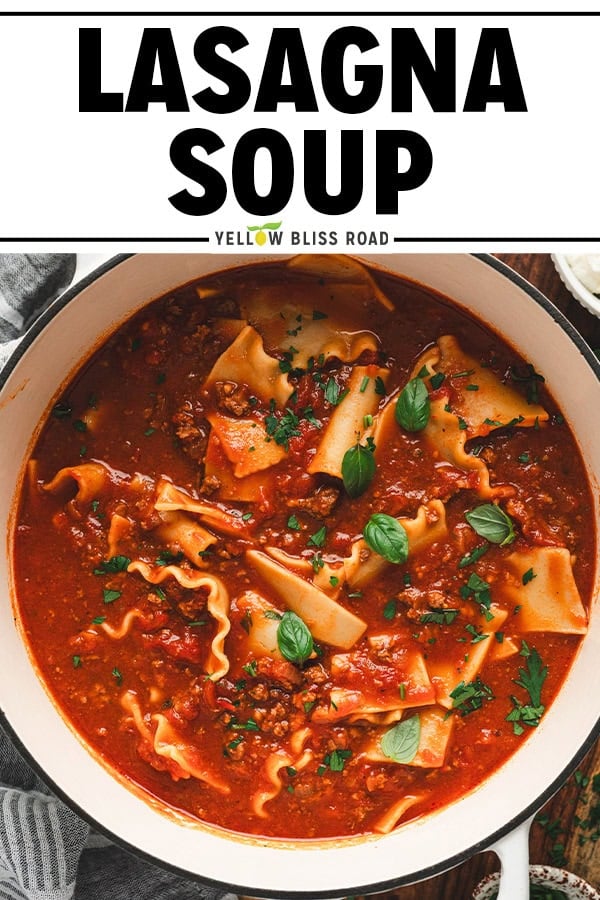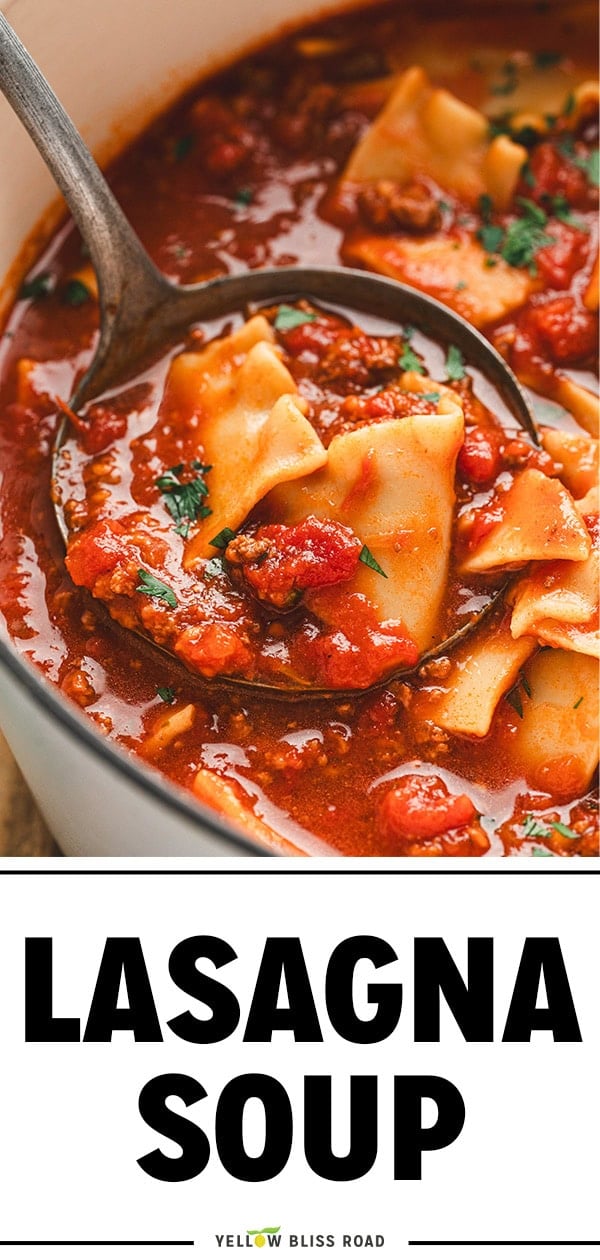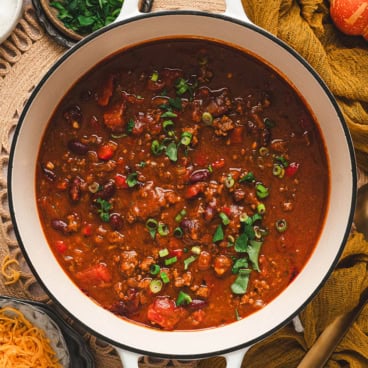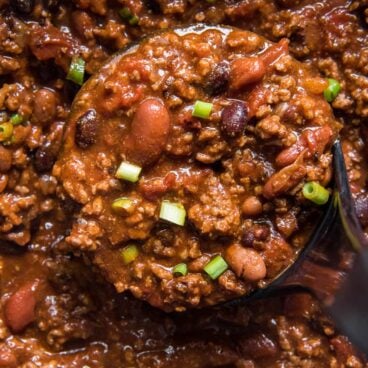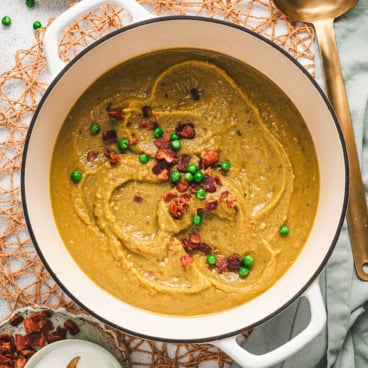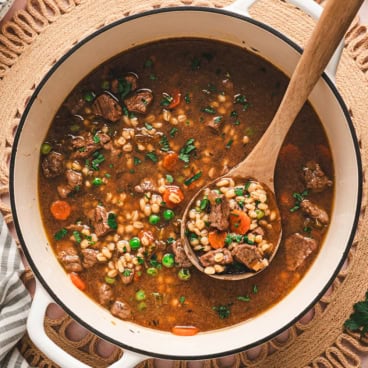This post may contain affiliate links. Please read our disclosure policy.
With our delicious Lasagna Soup Recipe, we’re giving you all the flavors of a traditional lasagna but without any of the layering and fuss of the casserole version. Make this on the stovetop or in the slow cooker, with only 10 minutes of prep!
For more lasagna-inspired recipes, try my Ravioli Lasagna or One Pot Stovetop Lasagna next.
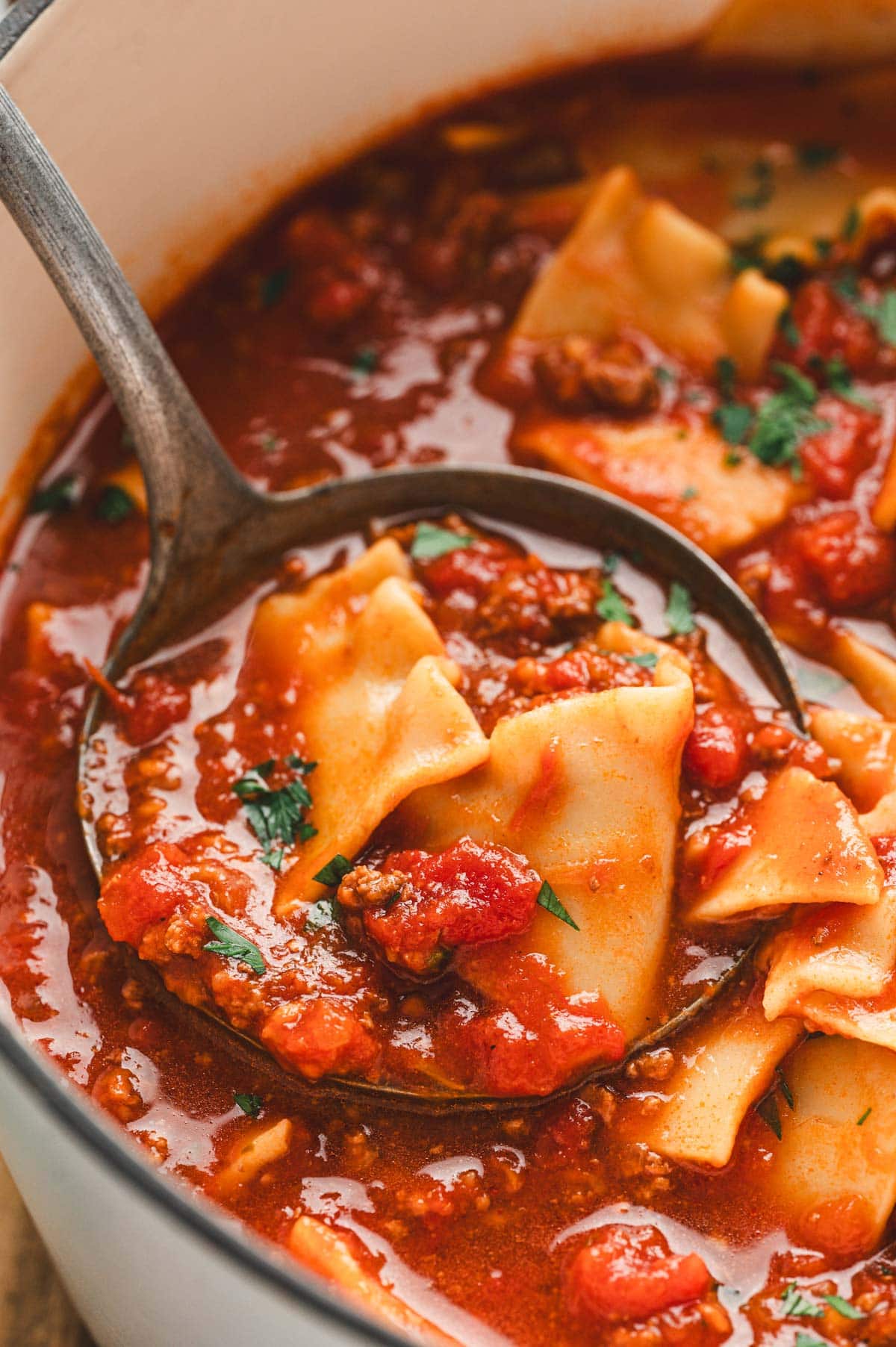
5 Things That Make Or Break Your Lasagna Soup
- Break up the lasagna noodles: About 2-inch pieces work perfectly for spooning.
- Use high-quality marinara: A good jar of marinara (like Rao’s) makes a huge difference in flavor. Skip anything overly sweet or watery.
- Don’t skip browning the meat: It adds crucial depth to your soup base.
- Add noodles at the right time: Too early and they’ll get mushy, especially if making ahead.
- Top with cheese: Ricotta, mozzarella, and parmesan add the creamy, cheesy comfort that makes this taste just like classic lasagna.
RECIPE WALK-THROUGH
How To Make Lasagna Soup
See the recipe card below for full, detailed instructions
Our homemade Lasagna Soup recipe is simple, but these small details will help you get the best results possible. Think of this section like me cooking alongside you in the kitchen.
Step 1: Brown the Beef
Heat olive oil in a large pot or Dutch oven over medium-high heat. Add ground beef, diced onion, and minced garlic. Cook until the meat is browned and the onion is soft. Drain any excess grease using a paper towel.
- A meat masher is one of my favorite kitchen tools! If you don’t have one, you need to pick one up!

Step 2: Build the Base
Stir in tomato paste, oregano, salt, and pepper. Let it cook for about 1 minute to allow the flavors to intensify.
- Cooking tomato paste like this is such an important step when you use it. Don’t skip it!
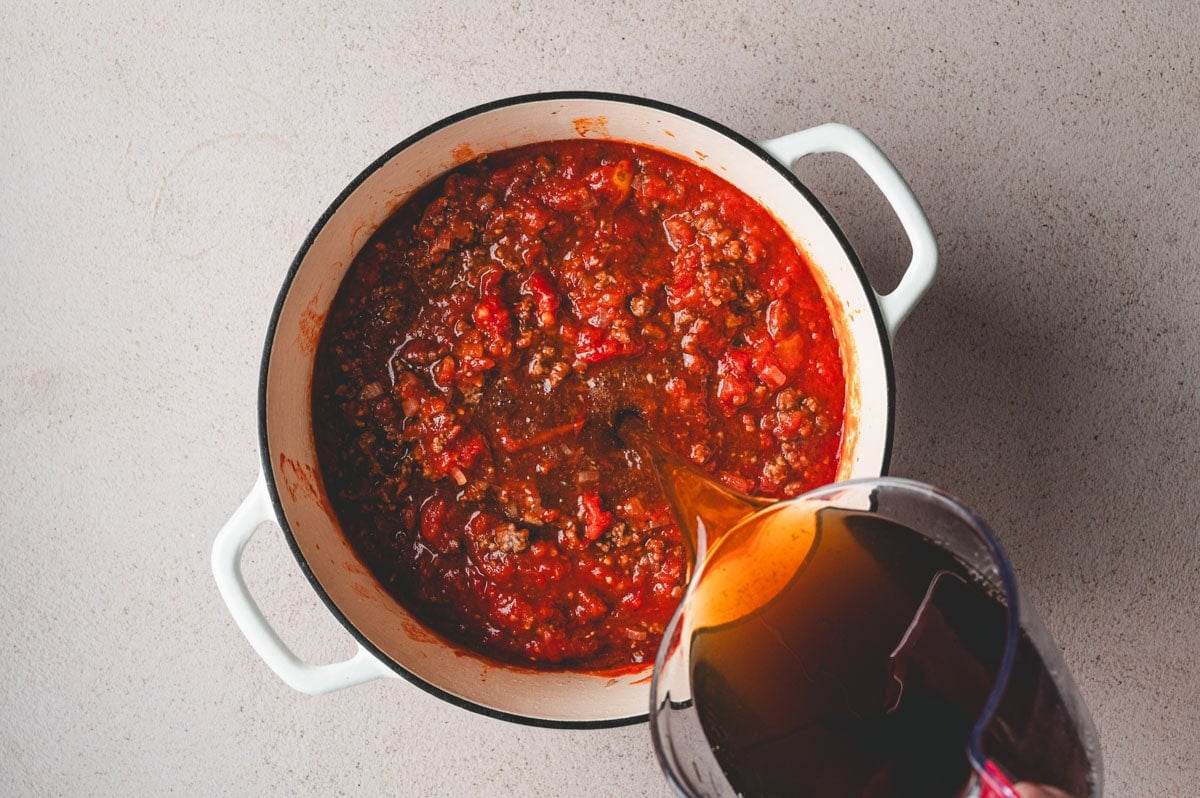
Step 3: Add the Liquids
Pour in the marinara sauce, canned San Marzano tomatoes, and beef broth. Use a wooden spoon, that meat masher I suggested above, or potato masher to break up the whole tomatoes. Scrape the bottom of the pot to release any browned bits. Bring to a boil, then reduce the heat to a simmer for 15 minutes.
- Break up the canned tomatoes. Crushing San Marzano tomatoes by hand or with a masher ensures the right texture without big chunks.
- If you’re not using San Marzano tomatoes, a pinch of sugar and a pinch of baking soda can help smooth out the flavor.
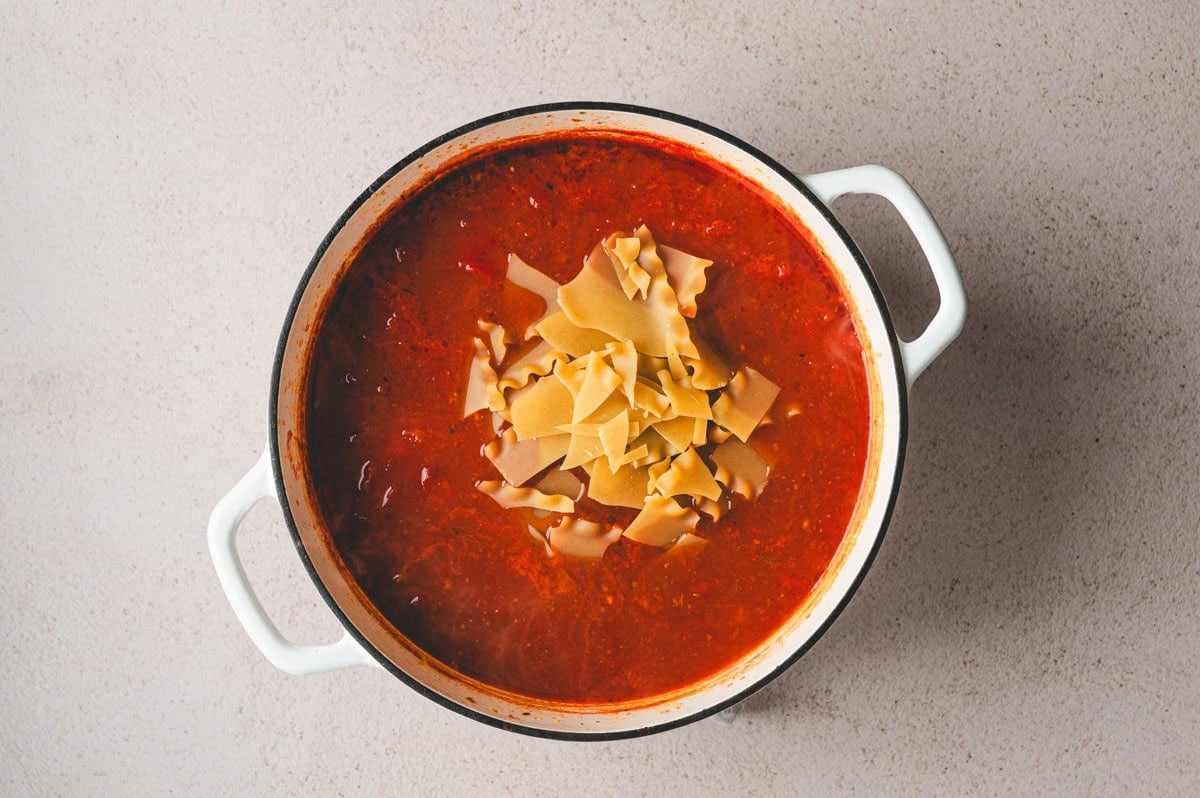
Step 4: Cook the Noodles
Add broken lasagna noodles directly into the soup. Simmer for about 15 minutes, stirring frequently to prevent sticking, until noodles are al dente.
- Lasagna noodles can sink and stick, so frequent stirring keeps them perfectly tender and evenly cooked.
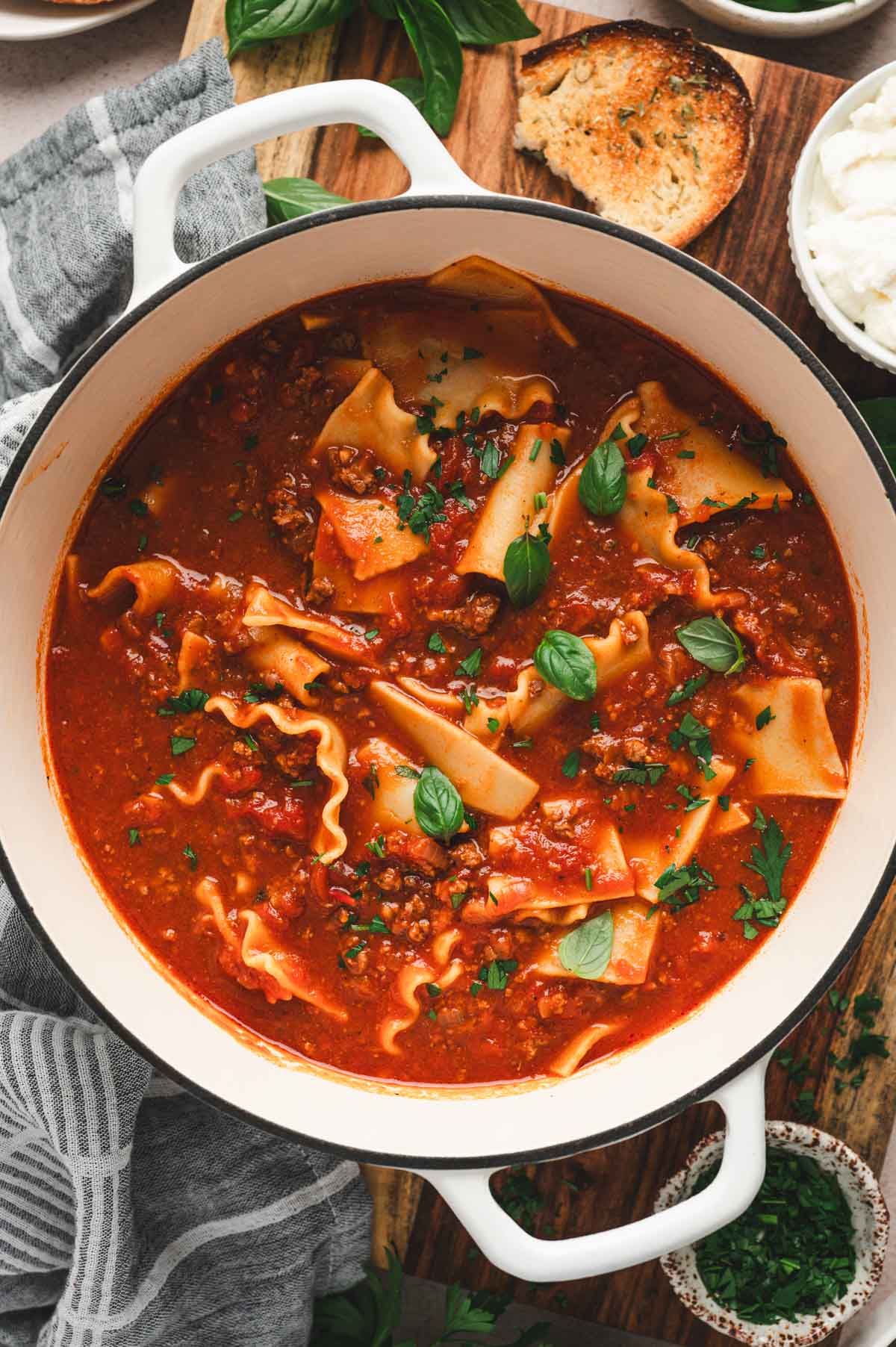
Step 5: Taste and Serve
Adjust seasoning to taste. Ladle into bowls and serve hot with your favorite toppings like ricotta, mozzarella, and fresh herbs.
Slow Cooker Option
- Brown the ground beef, onion, and garlic in a skillet.
- Add the tomato paste and seasonings, and then deglaze with a splash of broth.
- Transfer the mixture to your slow cooker along with the marinara, tomatoes, and remaining broth.
- Cook on LOW for 6-8 hours or HIGH for 3-4 hours.
- Add the lasagna noodles during the last 45-60 minutes, stirring every 20 minutes to prevent sticking.
Best Lasagna Soup Toppings
- Cheese: Add ricotta, shredded mozzarella, and parmesan. Use cottage cheese for an extra protein boost.
- Creamy Add-ons: A swirl of heavy cream is perfect in this dish!
- Fresh Garnishes: Chopped basil and parsley are beautiful and add some fresh herbal notes.
- Heat Level: A dash of red pepper flakes or hot sauce will add a little zing.
Serving Suggestions
- Top with a generous scoop of ricotta, shredded mozzarella, and a sprinkle of parmesan for that cheesy lasagna finish.
- Serve with warm garlic bread and a crisp Caesar Salad to round out the meal.
- Focaccia Bread is also perfect for soaking up the rich tomato broth.
- Add some easy Roasted Vegetables to add balance and color to your plate.
Storage Tips
Storing, Freezing, and Make Ahead
- Fridge: Store in an airtight container for up to 5 days.
- Freezer: Freeze in gallon or quart-size bags for up to 2 months. Thaw overnight in the fridge. This recipe freezes best without the noodles added, so we recommend only freezing the base and adding the pasta right before serving.
- Reheating: Warm gently on the stovetop or microwave. Add a splash of broth or water if the mixture is too thick.
- Make-Ahead Tip: Cook the soup base ahead of time and add the noodles just before serving for optimal texture.
- Leftovers Idea: Use leftovers as a pasta bake by topping with cheese and broiling until bubbly.
Frequently Asked Questions
What if I don’t like chunks of tomato?
You can puree the marinara and canned tomatoes before adding for a smoother soup.
What’s the best pasta for lasagna soup?
We love broken up lasagna noodles, while mafalda or rotini can work. Just adjust cook times as needed.
How do I prevent noodles from getting mushy?
Cook them just until al dente and avoid letting the soup sit too long after cooking.
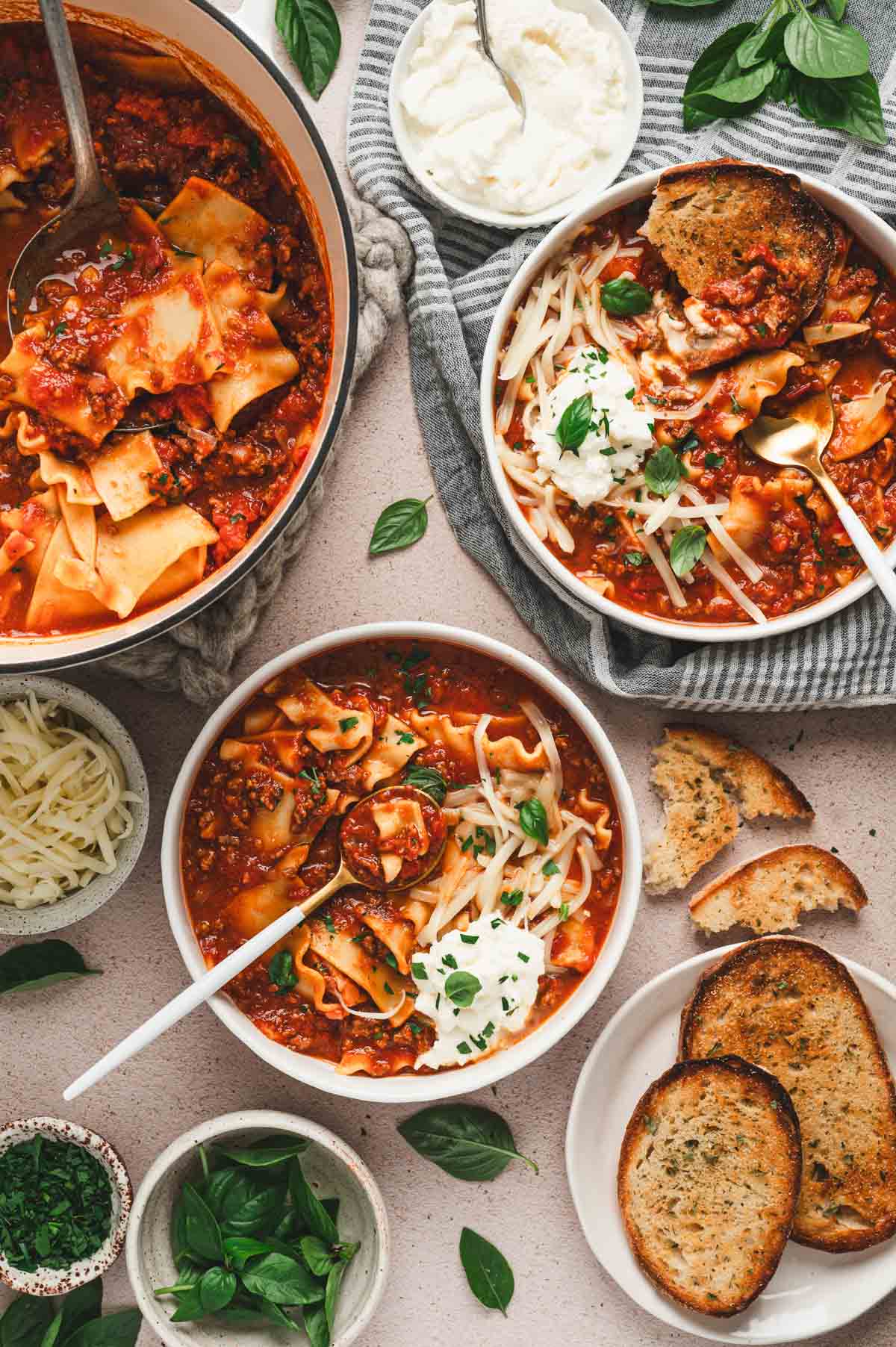
More Cozy Dinner Recipes
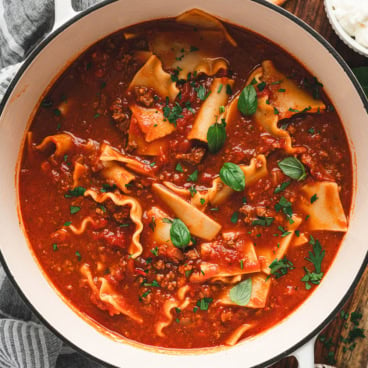
Lasagna Soup
Equipment
- Enameled Dutch Oven
- Large spoon or ladle
Ingredients
- 1 tablespoon Olive oil
- 1 pound Lean ground beef
- 1 small White onion diced
- 6 cloves Garlic pressed or minced
- 1 tablespoon Tomato paste
- ½ teaspoon Dried oregano
- 1 teaspoon Kosher salt
- ¼ teaspoon Freshly ground black pepper
- 2 cups High quality marinara sauce I recommend Rao’s
- 28 ounce Canned whole San Marzano tomatoes
- 6 cups Low sodium beef broth
- 8 Lasagna noodles broken into bite size pieces
Optional toppings:
- Shredded mozzarella
- Ricotta cheese
- Grated parmesan cheese
- Fresh chopped parsley and/or basil
Instructions
Stovetop
- Heat a large heavy pot or Dutch oven over medium high heat, add olive oil once hot. Add in the ground beef, onion and garlic. Chop up ground beef and cook until beef is cooked through and onions are tender. Use a paper towel to absorb any grease in the bottom of the pan.
- Add in the tomato paste, oregano, salt, and pepper, cook 1 minute.
- Add in the marinara sauce, canned tomatoes, and beef broth, scraping any browned bits from the bottom of the pot. Use a wooden spoon or potato masher to break up the canned tomatoes. Bring to a boil, reduce to simmer and let it cook for 15 minutes to meld the flavors.
- Add the broken up lasagna noodles and cook until tender, about 15 additional minutes, stirring frequently to keep lasagna noodles from sticking to bottom of pot. Once noodles are tender, taste and adjust seasoning. Serve immediately with any desired toppings.
Slow Cooker
- Brown beef, onions and garlic in a large frying pan as directed above. Add the tomato paste and seasonings, cook 1 minute, deglaze pan with a splash of the broth. Add everything to the insert of a 6+ quart slow cooker.
- Add the marinara sauce, canned tomatoes, and beef broth, mash with potato masher or wood spoon. Cook on low 6-8 hours, or on high 3-4 hours. Add lasagna noodles during the last 45-60 minutes of cooking, stir every 20 minutes. Taste and adjust seasoning, serve immediately.
Notes
- Break up lasagna noodles into 2 inch pieces or use a different type of pasta. Adjust pasta cook time as needed.
- You can use chicken broth instead of beef broth.
- Storage: Store in an airtight container in the fridge for up to 5 days.
- Freezer: Freeze in gallon or quart-size bags for up to 2 months. Thaw overnight in the fridge. This recipe freezes best without the noodles added, so we recommend only freezing the base and adding the pasta right before serving.
- Reheating: Warm gently on the stovetop or microwave. Add a splash of broth or water if the mixture is too thick.
- Make-Ahead: Cook the soup base ahead of time and add the noodles just before serving for optimal texture.
Nutrition
Nutritional Disclaimer Kristin Maxwell of “Yellow Bliss Road” is not a dietician or nutritionist, and any nutritional information shared is an estimate. For accurate calorie counts and other nutritional values, we recommend running the ingredients through your preferred online nutritional calculator. Calories and other nutritional values can vary depending on which brands were used.
